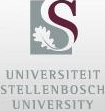Fibre reinforced concrete (FRC) is becoming a more popular construction material due to the positive contribution it makes to concrete. Fibres can be divided into two general geometric categories, namely micro fibres (length typically less than 15 mm) and macro fibres (lengths at least 30 mm). Fibres can also be manufactured from different materials, most common being steel, polypropylene, glass and PVA. Natural fibres can also be used. The greatest advantage of adding fibres to concrete is the improved post cracking behaviour of concrete in tension and flexure. Micro fibres are often used for the reduction of the risk of plastic shrinkage cracking, or increasing the ductility of concrete in the case of Strain Hardening Cement-based Composite (SHCC). UCM has focused on a large number of aspects of FRC, but most recently the focus has been on the use of macro synthetic fibres and the creep of cracked FRC.
Fatigue Behaviour of Fibre Reinforced Concrete
Student: Humaira Fataar (PhD)
Supervisor: Dr Riaan Combrinck & Prof Billy Boshoff

